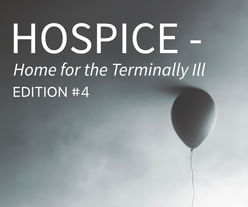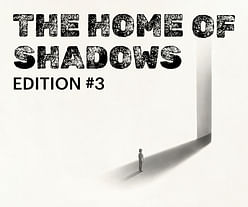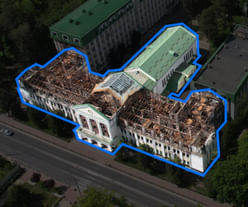
The Underbridge Housing Challenge just revealed its winning entries. The design ideas contest is the 17th edition in a series of competitions by Buildner centered around developing speculative solutions for affordable housing challenges around the world. Three winners, a sustainability award recipient, and six honorable mentions were recognized.
This year's competition challenged participants to transform neglected spaces below bridges into dynamic, thriving communities that provided unconventional housing solutions. Designs needed to showcase adaptability, able to cater to various needs while remaining cost-effective and sustainable. The jurors sought practical, scalable, and eco-conscious designs.
FIRST PLACE AND BUILDNER STUDENT AWARD WINNER: NEW RAFT
Design Team: Yujun Cai (China); National University of Singapore

Project description: "The selected site is in Jiuzhou Bay within the Pearl River Estuary, a crossroads with many shipping lanes and a harbor for the Tanka people. According to the authors, the new Hong Kong-Macau bridge has disrupted the natural environment of the Tanka community, who have fished and lived on the water here for centuries. The design aims to create a 'bottom-up' maritime community. Three elemental units are created using the module of a typical Tanka fishing raft, with a layout meant to maintain the physical structure of existing communities. The negative space beneath the bridge is transformed into a cultural space."
SECOND PLACE: The Hiveway
Design Team: Stephanie Julie Maignan, Qianhui Wang, Ogulnabat Jumayeva, and Brian Tien (Canada); Surbana Jurong

Project description: "The Gardiner Expressway, once a symbol of futuristic 1960s urban planning, now divides downtown Toronto from Lake Ontario, creating polluted, unused spaces beneath it. As Toronto's population nears 7 million, the demand for affordable housing in the downtown core is immense. The HiveWay proposes to transform a 2 km stretch of the Gardiner, from Lower Jarvis Street to east of the Don Valley Parkway, into vibrant, affordable housing. Utilizing the planned rerouting of this segment, the vision integrates housing directly with the infrastructure. Precast concrete box girders are designated for new stretches, offering faster, modular construction. The concept envisions housing cars within the girders' voids, leaving space above and below for residential units, mixed-use amenities, and green spaces. Hexagonal modules will host soundproof, insulated housing units, while ground and intermediate levels will offer community services, retail, and recreational areas. The HiveWay aims to convert a relic of outdated urban planning into a sustainable, integrated development, revitalizing Toronto's urban landscape."
THIRD PLACE: [0,0,-1]
Design Team: Hoyeon La, Seo Junhyeong, Jung Hyun Ji, and Seonghyun Jeong (South Korea); Yeungnam University
![Third place winner [0,0,-1] by Hoyeon La, Seo Junhyeong, Jung Hyun Ji, and Seonghyun Jeong. Image courtesy Buildner. Third place winner [0,0,-1] by Hoyeon La, Seo Junhyeong, Jung Hyun Ji, and Seonghyun Jeong. Image courtesy Buildner.](https://archinect.gumlet.io/uploads/60/60e9xqgbklmvv95f.jpg?fit=crop&auto=compress%2Cformat&enlarge=true&w=514)
Project description: "XYZ: Manhattan U-Housing reimagines urban expansion by utilizing the space beneath the Manhattan Bridge. The bridge is supplied with water from the East River and powers a piezoelectric generator through traffic. Light ducts connect streetlights to residential areas, which include libraries, cafes, and shelters. This project addresses urban density and social stratification by creating U-shaped steel-frame units that integrate with the bridge, providing noise and vibration isolation. Each unit is independent, avoiding interference with neighbors, and features manual elevators powered by human strength, minimizing energy consumption while ensuring vertical mobility."
BUILDNER SUSTAINABILITY AWARD WINNER: LIVING UNDER A COMMON ROOF - Reinterpreted tube houses
Design Team: Thu Nga Nadine Do (Austria); Vienna University of Technology

Project description: "Clay, a key material in traditional Vietnamese architecture, is central to the tube houses in 'Living Under a Common Roof'. Locally sourced clay and steel minimize transport distances. Positioned under the bridge, the houses are protected from extreme weather. A serving wall and double facade ensure cross-ventilation and natural cooling. Adaptability, affordability, and sustainability are core principles. The design dynamically responds to residents' needs, allowing adjustments to private and common spaces. Adaptable circulation connects vertical private rooms, with financial compensation for extended private areas. This evolving design addresses Vietnam's housing crisis by activating underutilized spaces like the 750-meter-long Phu My Bridge. The traditional tube house, narrow yet long, has evolved to create more vertical living space. This design revives communal and climate benefits, offering affordable housing near industrial zones. Emphasizing transition zones between indoor/outdoor and private/shared spaces, each unit comprises two tube houses and shared vertical circulation. Public areas like playgrounds, shops, and green spaces foster community and sustainability."

Hospice - Home for Terminally Ill #4
Register by Thu, Mar 13, 2025
Submit by Mon, Jun 16, 2025

The Home of Shadows / Edition #3
Register by Wed, Jan 29, 2025
Submit by Mon, Mar 3, 2025

Design and Build Student Competition- "Sacred Geometry: Platonic Solids"
Register/Submit by Sat, Apr 19, 2025

Rebuild the State Tax University Main Campus in Irpin
Register by Sat, Feb 1, 2025
Submit by Fri, Feb 28, 2025
2 Comments
wtf
Recent studies have identified crazy high pollution levels near major roadways. Noise also. So much that it's not advisable to live within several hundred feet of major highways. Dwelling units this close to an auto bridge are probably not a good idea.
One study is online here: https://www.urban.org/sites/de...